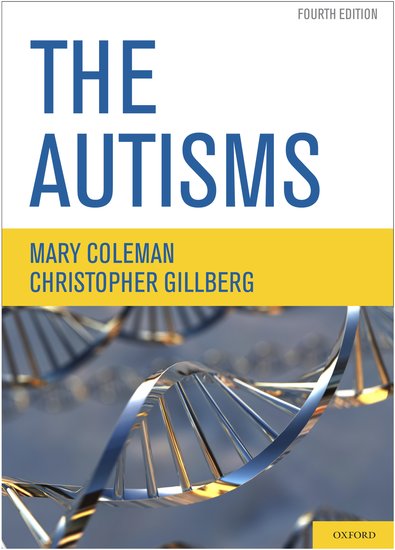By Mary Coleman
Autism was first described in 1943 and since then, the understanding of this disease entity by the scientific community has greatly changed. In 2012, autism is now considered a behaviorally-defined neurodevelopmental disorder arising well before birth, characterized by a marked clinical and etiological heterogeneity. Recently there is a question whether there may be an epidemic of autism, as the rates of diagnosis have continued to rise to alarming levels. The earliest prevalence studies from 1966 to 1979 showed around 4-5 cases per 10,000 children in England and the USA. However the latest rates from the Center for Disease Control and Prevention showed 113 cases per 10,000 American children.
To deal with this contemporary question of a possible epidemic, let’s review some of the history of the other major neurodevelopmental disorder which arises during the same early time period of human gestation as autism — intellectual disability. In 1866, Dr. John Langdon Down published a paper pointing out that all children who were classified as mentally retarded (today intellectually disabled) did not have only one disease. Although these retarded children all suffered from the same symptoms — the mental retardation, the age of presentation (usually 18 months), and enlarged tongues (macroglossia) — he announced that one group had what he called mongolism (today Down syndrome) and another group had cretinism (today infant hypothyroidism). Although there were no population-based epidemiological studies of intellectual disability to give us exact figures in those early years, the percentage of children with intellectually disability began to rise as new disease entities continued to be identified, as less severe cases were diagnosed, and as support and therapies were offered to parents. Today 146 years later, we know that there are hundreds of different types of intellectual disability whose numbers have gradually continuing to increase, and furthermore that this cognitive limitation is shared by significant numbers of children with autism.
Autism also was originally described as a single disorder, behaviorally defined by Kanner in 1943. However by 1976, at the time of the earliest prevalence studies, it already had become clear that autism was a series of different disease entities, as demonstrated in a study of 78 children with autism matched with 78 age, sex, and parent-income controls. In 2012, in a pattern similar to the intellectual disability syndromes, autism is known to be associated with chromosomal aberrations, classic monogenic disorders, genomic imbalances (copy number variants), rare highly penetrant de novo genetic point mutations, infections, space-occupying lesions, and toxic fetal embryopathies.
Thus, regarding the possibility of an epidemic of autism, one important question would be: Which particular disease entity or entities, which undiagnosed subgroup or subgroups have increased? Infections, the most common historical causes of epidemics, are currently found to be insignificantly rare in the etiology of autism. Instead, the overwhelming number of twin studies for the last thirty years have suggested that a genomic error underlies most individuals with autistic features, raising the basic question — is it possible to have a genetic epidemic?
However, it should be noted that today the majority of children with autistic features don’t have an underlying diagnosis, including several large subgroups. For example, although there are 19 different etiologies of large heads (macrocephaly) identified in individuals with autism, yet most children with macrocephaly remain undiagnosed. Genomic abnormalities have only been identified in somewhat over 20% of individuals with autism so far, although with the recent development of lower cost whole exome sequencing, this may change soon. The first whole exome sequencing studies in autism already have shown an increased rate of rare de novo point mutations in genes and have confirmed a high degree of locus heterogeneity.
Let’s be clear that we don’t definitely know all the causes of the increasing numbers of children diagnosed with autism as a whole, or which of the underlying disease entities or subgroups are involved. Possibilities include expansion of the diagnostic criteria, greater awareness of autism by physicians and the public, secondary diagnoses added to individuals with intellectual disability, enhanced survival of preterm infants, older age of the parents, and as-yet-unproven environmental toxins. In view of the suffering of these children, their parents and their communities, identification of the etiology in every child with autism is a high priority. The essential first step of developing a medical therapy which actually ameliorates or reverses autism is accurate neurological diagnosis; we already can see the future in studies underway in the fragile X syndrome.
Mary Coleman MD is Medical Director of the Foundation for Autism Research Inc. She is the author of 130 papers and 11 books, including six on autism. Her latest book is The Autisms, Fourth Edition co-authored with Christopher Gillberg MD.
Subscribe to the OUPblog via email or RSS.
Subscribe to psychology articles on the OUPblog via email or RSS.
View more about this book on the ![]()
![]()




[…] In the end, one of the most important interventional aspects in the field of autism and related disorders is the change of societal attitudes. Acceptance, understanding, and support for these children and adults with autism has been slow in coming, but largely thanks to a number of strong and amazing parents it’s underway. Mary Coleman MD is Medical Director of the Foundation for Autism Research Inc. She is the author of 130 papers and 11 books, including six on autism. Her latest book is The Autisms, Fourth Edition co-authored with Christopher Gillberg MD. Read her previous blog post “Is there an epidemic of autism?”. […]
Mary is there a way you can send me an email at the email address i provided